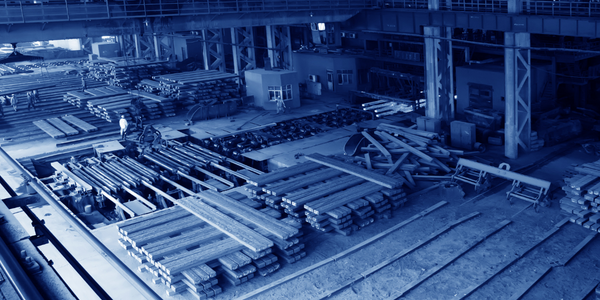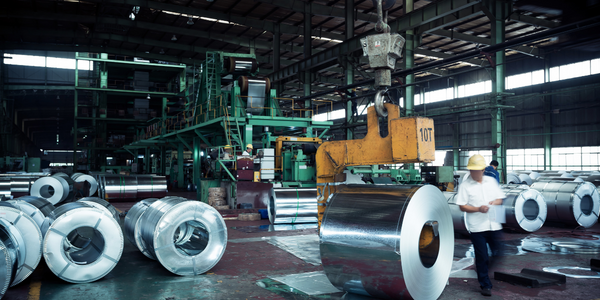
Technology Category
- Cybersecurity & Privacy - Endpoint Security
- Cybersecurity & Privacy - Intrusion Detection
Applicable Industries
- Metals
- National Security & Defense
Use Cases
- Cybersecurity
- Tamper Detection
Services
- Cybersecurity Services
The Customer
Tata BlueScope Steel
About The Customer
Tata BlueScope Steel is a leading steel company, a confluence of two global players in the steel industry - Tata Steel and BlueScope Steel, Australia. The company offers best-in-class products including coated steel, steel building solutions, and related building products across the Asia Pacific region. The company was looking to expand visibility within its network and quickly identify security gaps, incidents, and remediate them. The organization was also aware that threats were becoming even more sophisticated and needed to be neutralized before they actively targeted Tata BlueScope Steel’s IT ecosystem.
The Challenge
Tata BlueScope Steel, a leading steel company in the Asia Pacific region, was facing several challenges in its cybersecurity landscape. The company was struggling with a lag in real-time monitoring and frequent endpoint security issues related to security management. Their defensive approach to cybersecurity was proving to be inadequate in an evolving threat landscape. The lack of a Security Operations Center (SOC) to monitor the organization’s security environment 24x7 was a significant concern. The company was also aware of the increasing sophistication of threats and the need to neutralize them before they targeted their IT ecosystem. Additionally, the organization had experienced multiple phishing incidents, and addressing them was a key challenge. The pandemic-induced remote working scenario further exacerbated the situation, making the workforce more susceptible to attacks. Tata BlueScope wanted to extend security to employees working remotely and address the risk from zero-day attacks.
The Solution
To address these challenges, Tata BlueScope Steel chose to implement Sophos Managed Threat Response (MTR). The company moved from its existing on-premise Sophos Endpoint solution to a cloud solution. The Sophos partner guided the company through the defining features of Sophos Intercept X Advanced with XDR and MTR Standard, emphasizing the need for the transition. The implementation process was made smooth with a thorough knowledge transfer to the Tata BlueScope team. The solution offered a combination of automated, lead-driven, and lead-less threat hunting, ensuring no threat went unnoticed. With lead-driven threat hunting, a manual, human-led identification and investigation process identified new attacker behavior that was then addressed by the MTR ops team. Lead-less threat hunting combined threat intelligence, data science, and knowledge of attacker behavior with what’s known about Tata BlueScope Steel’s environment to anticipate new attacker behavior.
Operational Impact
Quantitative Benefit

Case Study missing?
Start adding your own!
Register with your work email and create a new case study profile for your business.
Related Case Studies.

Case Study
Goldcorp: Internet of Things Enables the Mine of the Future
Goldcorp is committed to responsible mining practices and maintaining maximum safety for its workers. At the same time, the firm is constantly exploring ways to improve the efficiency of its operations, extend the life of its assets, and control costs. Goldcorp needed technology that can maximize production efficiency by tracking all mining operations, keep employees safe with remote operations and monitoring of hazardous work areas and control production costs through better asset and site management.

Case Study
KSP Steel Decentralized Control Room
While on-site in Pavlodar, Kazakhstan, the DAQRI team of Business Development and Solutions Architecture personnel worked closely with KSP Steel’s production leadership to understand the steel production process, operational challenges, and worker pain points.

Case Study
Bluescope Steel on Path to Digitally Transform Operations and IT
Increasing competition and fluctuations in the construction market prompted BlueScope Steel to look toward digital transformation of its four businesses, including modern core applications and IT infrastructure. BlueScope needed to modernize its infrastructure and adopt new technologies to improve operations and supply chain efficiency while maintaining and updating an aging application portfolio.

Case Study
RobotStudio Case Study: Benteler Automobiltechnik
Benteler has a small pipe business area for which they produce fuel lines and coolant lines made of aluminum for Porsche and other car manufacturers. One of the problems in production was that when Benteler added new products, production had too much downtime.

Case Study
Continuous Casting Machines in a Steel Factory
With a very broad range of applications, steel is an important material and has been developed into the most extensive alloy in the engineering world. Since delivering high quality is absolutely crucial for steel plants, ensuring maximum productivity and the best quality production are the keys to competitiveness in the steel industry. Additionally, working conditions in steel factories are not suitable for workers to stay in for long periods of time, so manufactures usually adopt various machines to complete the steel production processes. However, the precision of these machines is often overestimated and the lack of flexibility also makes supervisors unable to adjust operating procedures. A renowned steel factory in Asia planned to improve its Distributed Control System (DCS) of furnaces as well as addressing the problem of insufficient accuracy. However, most well-known international equipment suppliers can not provide a satisfactory solution and local maintenance because the project needed new technologies to more accurately control equipment operations. By implementing Advantech’s automated monitoring and control solution, steel factories can not only improve the manufacturing processes but can also allow users to add additional functions to the existing system so as to make sure the operation runs at high efficiency.

Case Study
Automated Predicitive Analytics For Steel/Metals Industry
Asset to be monitored: Wire Compactor that produces Steel RebarCustomer Faced The Following Challenges:Dependent upon machine uptime.Pressure cylinders within the compactor fail to control compression and speed causing problems in binding the coil.Equipment failure occurs in the final stage of production causing the entire line to stop, can you say bottleneck?Critical asset unequipped with sensors to produce data.



